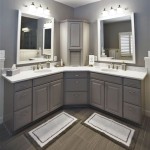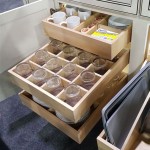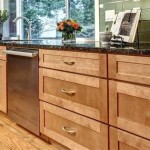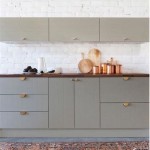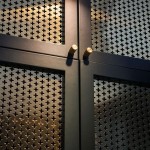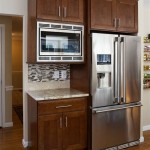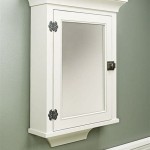Cabinet Hardware Placement Guide
Cabinet hardware, such as knobs, pulls, and hinges, plays a vital role in both the functionality and aesthetics of a kitchen, bathroom, or any space featuring cabinetry. Proper placement of these elements ensures ease of use, enhances the overall design, and contributes to the long-term durability of the cabinets. This guide will delve into various aspects of cabinet hardware placement, providing insights into achieving a harmonious and practical outcome.
Factors to Consider Before Installation
Before embarking on the installation process, it's essential to consider several factors that influence hardware placement. These include:
- Cabinet Style and Size: The design and dimensions of your cabinets dictate the appropriate hardware size, style, and placement. For instance, large doors may necessitate longer pulls, while smaller doors might be better suited for knobs.
- Door Material: The material of your cabinet doors affects the installation process. Solid wood doors offer more flexibility in hardware placement, while frameless cabinets might have specific guidelines.
- Hardware Style: The aesthetics of the hardware should complement the overall kitchen design. Consider the style, finish, and size of the hardware to ensure a cohesive look.
- Ergonomics and Functionality: The placement of the hardware should prioritize ease of use. Handles should be positioned comfortably for opening and closing doors, while knobs should be easy to grasp.
Standard Hardware Placement Guidelines
While there's no one-size-fits-all approach to cabinet hardware placement, industry standards provide a starting point. These guidelines ensure an aesthetically pleasing and functional outcome.
Knobs
- Placement: Knobs are typically centered on the door, about 2.5 to 3 inches from the top or bottom edge.
- Spacing: For doors with multiple knobs, maintain a consistent spacing of 3 to 4 inches between them.
- Overlay vs. Flush Mount: For overlay doors, where the door overlaps the cabinet frame, the center of the knob should be aligned with the edge of the cabinet door. For flush mount doors, the center of the knob should be aligned with the face frame.
Pulls
- Placement: Pulls are often placed horizontally on the door, aligning the center of the pull with the center of the door.
- Spacing: For doors with multiple pulls, maintain a consistent spacing of 12 to 16 inches between them. This ensures comfortable access and spacing between hands.
- Pull Length: The length of the pull should be at least 3 inches longer than the width of the cabinet door for optimal grip.
- Overlay vs. Flush Mount: Similar to knobs, the placement of pulls should align with the edge of the cabinet door for overlay doors and the face frame for flush mount doors.
Hinges
Hinges play a crucial role in the smooth operation of cabinet doors. Proper placement ensures a seamless opening and closing experience.
- Placement: Hinges are typically installed on the sides of the cabinet door, with the distance between the hinge and the top and bottom edges depending on the type of hinge and the size of the door.
- Number of Hinges: The number of hinges required depends on the size and weight of the door. Small doors often need two hinges, while larger, heavier doors might require three or more.
- Alignment: The hinges on both sides of the door should be aligned accurately to ensure proper door swing and prevent misalignment.
Tips for Achieving a Balanced and Stylish Look
Beyond standard guidelines, there are several techniques that can enhance the aesthetics of cabinet hardware placement.
- Balance and Symmetry: In a kitchen with multiple cabinets, aim for symmetry in hardware placement. This creates a sense of order and visual harmony.
- Consider the Overall Design: The style of the cabinet hardware should complement the overall design of the kitchen. For example, modern kitchens might benefit from sleek, minimalistic hardware, while traditional kitchens might favor more ornate styles.
- Experiment with Different Placement Options: Before committing to a final placement, consider experimenting with different options. This helps to determine the best placement for comfort and aesthetics.
- Seek Professional Consultation: If you're unsure about cabinet hardware placement, don't hesitate to seek professional consultation from a kitchen designer or cabinet installer. Their expertise can guide you towards optimal placements.
Understanding the principles of cabinet hardware placement enables you to create a practical and visually appealing kitchen or any space featuring cabinetry. By paying attention to factors such as cabinet style, hardware style, and ergonomics, you can ensure that your cabinets function smoothly and enhance the overall aesthetic appeal of your space.

Design 101 Cabinet Hardware Placement Lark Linen

Cabinet Hardware Placement Guide

The Ultimate Guide For Cabinet Hardware Placement And Sizing Kitchen Inspiration Design

The Ultimate Guide For Cabinet Hardware Placement And Sizing Kitchen Remodel

Hardware Guide

Guide For Hardware Positioning Mockett Cabinet Placement Kitchen

Easy Cabinet Hardware Placement Guide Bloom And Babe

How To Install Cabinet Handles Straight Without Losing Your Mind

Cabinet Hardware Installation Guide At Cabinetknob Com

Where To Place Cabinet Hardware Emtek
Related Posts

